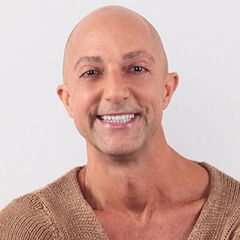FREE! Did someone say free? Building a social media community costs time, but currently all social media outlets discussed in this blog are free. Social media offers today’s busy health and exercise professionals a wide range of methods for building a true fitness community without having to travel, invest in resources or even consult others. For instructors who operate outside of a traditional gym setting, social media outlets can be particularly helpful at extending your business reach to new markets, while creating added value for existing clients. To be sure, your current tribe will be the most vocal on your social media posts, and these are the people responsible for helping you spread your message far and wide.
Personal experience has led me to embrace the idea of spending more and more time on social media because of the return on this investment. Your followers want to know more about you, not only on a personal level, but how you do what you do in fitness. This happens under three main umbrellas of posts: educational, motivational and inspirational.
1. Educational Posts
Educational posts offer your followers value by explaining the purpose and reasoning behind the programs and workout you create. Here are some ideas to help get you started:
- Post common joint actions and muscles involved in the most common movements you teach in classes, such as planks, burpees, tree pose and water jogging.
- Explain which types of flexibility movements you integrate into the beginning of your sessions, and why static stretching is left for the end.
- Explain in common terms why spot reduction cannot work, and address the ways to reduce overall body fat.
2. Motivational Posts
Motivational posts provide value by encouraging your followers to participate and get excited about upcoming workouts and classes. For example:
- Reveal the theme of an upcoming class to motivate participants to come out in the snow or leave a beautiful sunny day to be inside for a special class, such as “tonight’s class will include a special playlist featuring all songs about energy.”
- Publish a graphic revealing possible calories burned based on the class you have planned so participants can come motivated for realistic, desirable results.
- Show a clip of a client before a class—lethargic and unsure—edited before a clip of the same client immediately after a class boasting about his or her endorphins. Ask in both clips: “Tell us how you feel right now.”
3. Inspirational Posts
Inspirational posts give your followers value by letting them connect with inspirational stories that demonstrate how your fitness techniques and tips are effective in getting others involved on a kinesthetic, emotional level. Here are some ways to do that:
- Show a “before” and “current” photo of a client who has achieved visually impressive results with your services.
- Profile a client who makes a considerable effort to come to training or a class with a short video interview. For example: “This is Sally, who came out in the snowstorm tonight because she said nothing could make her miss gym. Sally, what motivated you to come tonight?”
- Share the inspirational posts of others in your tribe. Sharing shows that we have found others in our community with similar messages as we spread our mission.
Put Your Best Facebook Forward
If you had to choose just one application for social media exposure, most experts agree that Facebook is the clear winner. With more than 2 billion monthly active users, this resource allows health and exercise professionals to boost productivity, attract new people to their tribes and spread their fitness message via text, photographs and video clips. Here are some tips for getting the most out of Facebook:
- Make your posts visual with a picture or video clip.
- Responsibly tag those related to your article. Using the “@” symbol, mention and then highlight an individual, group or company that is relevant to your post.
- Be careful of using too many hashtags (grouped words starting with #), as these generally can distance people who see your posts. Do you really read every single hashtag when people post paragraphs of them?
- Create great header sentences like “And then THIS just happened…” or “Do you know why this member was crying with joy after class?”
- Ask open-ended questions at the end of posts to involve even those who do not know you or your current fitness personality or community. Draw them in. Make them care. Instead of posting a class that you subbed with a final group picture with everyone posing perfectly, post an action shot or short video clip from the middle of class and ask, “What were we doing in this clip? Closest answer gets a huge shout-out.”
- SHOW your message, don’t TELL it. This is the most difficult tip to master, and no single method exists. Instead of promoting how great your services are as a personal trainer, post a short clip of an ebullient client discussing her successes over the last few months of working with you. Instead of saying your class brought great energy tonight in an after-class selfie, capture everyone’s energetic yelps in a 10-second video clip during the last climb of an energetic studio cycling ride.
Author Tip: Follow the social media work of Erin Gargan (author of the best-selling Digital Persuasion) and Amanda Vogel, ACE blogger, to see many of these tips in action on a daily basis. Other recommended resources include Noel Chelliah (Malaysia), Petra Kolber (USA) and Angela Jenkins (Australia).
Quote Me
Make quotations count. Avoid posting quotations from other people. If followers want to know what someone says on a particular subject, they will consult his or her Facebook page or Google. Instead, share YOUR unique thoughts, insights and lessons. The more your followers learn what’s interesting about you, the more you will connect with your tribe.
You can also include a “call to action,” which is a request that your followers do something. Encourage followers to comment and share (as opposed to simply clicking “Like”) by asking open-ended questions and using the hashtag #sharethis at the bottom of your post. For example, a group fitness instructor or personal trainer might say, “Our theme next week is intensity. What song most inspires you to work harder? Post it here, and I will do my best to incorporate it into our playlist in class next week!” When you post one of your own quotations or lessons learned, why not also invite your followers to #sharethis with someone who needs to see this message today.”
Find Insta(gram) Gratification
As the saying goes, a picture is worth a thousand words, and the 500+ million people who use Instagram each month are proof. Instagram allows the sharing of short video clips, photos and brief messages with little or no written message involved. For your visual impact, consider these tips:
- Choose images with impact.
- Instagram works best when one strong photo speaks louder than a paragraph, such as a “before and now” graphic of a successful client or a shot of a check generated from a charity fundraiser at your club.
- Use photo editing options because better-quality images are more share-worthy. Instagram offers a variety of easy-to-use effects and filters to help you make smartphone snapshots look like they were taken by a pro.
- Keep videos brief. Shorter clips (under 30 seconds) generate more views than longer ones, so keep Instagram videos short, simple and audible.
Send Clients A-Twitter
Tweets help spread your thoughts—and, to a lesser degree, visuals—via short statements (280 characters) to Twitter’s audience, which includes 313 million+ users per month. Tweets are not known for generating calls to action, such as having people react to specials and discounts, but Twitter offers an easy way to involve followers in any story that is important to you. Consider Twitter as a text message/SMS that has a very large recipient list, so promoting last-minute class changes and special appearances can work well on this platform.
YouTube: Boost the Intensity of Your Brand’s Videos
Think of YouTube as your own television station—one that reaches 1 billion people and stars you (and your company). Unlike Facebook, which stores video posts chronologically, YouTube allows you to organize your video clips by topic, making them easier to search. Of course, it’s a great idea to share your YouTube videos on Facebook to increase their exposure. Try these steps:
- Create your free channel.
- Organize videos in playlists. YouTube allows users to create individual playlists, which are collections of video uploads organized by topic, such as “core training,” “Tabata,” “inspirational stories” or “yoga.” Your followers can easily home in on info that interests them, and you can include these playlists on your channel.
- Choose an interesting thumbnail. The image you select to represent your video in searches should be compelling enough to make people want to view the clip in its entirety. Usually this means pulling from the middle of the video rather than the start or finish.
- Use content that you own, including music, and encourage your followers to subscribe and leave comments.
Author Tip: To see how varied a YouTube fitness channel can be, check out my “findLawrence” channel. Notice how many different types of Playlists exist, all working as their own types of television shows and serving different audiences.
Conclusion
Each social media platform offers unique benefits for today’s health and exercise professional, and can help you spread your message and build your tribe. Together, we can use the power of social media and technology to spread our fitness messages across the globe.
Learn more about social media marketing in the health and fitness industry with one of our best-selling webinars: Using Social Media to Market Your Classes.




 by
by 









